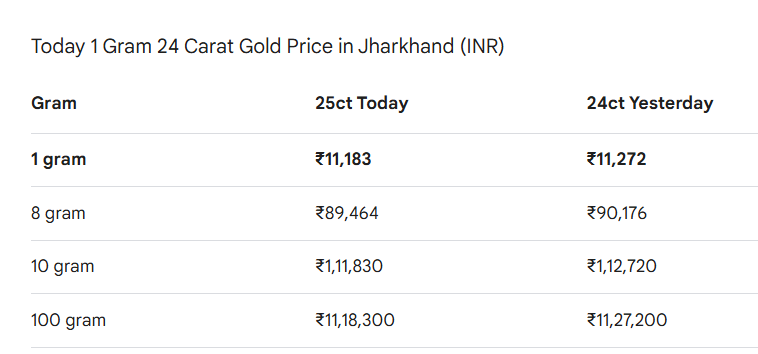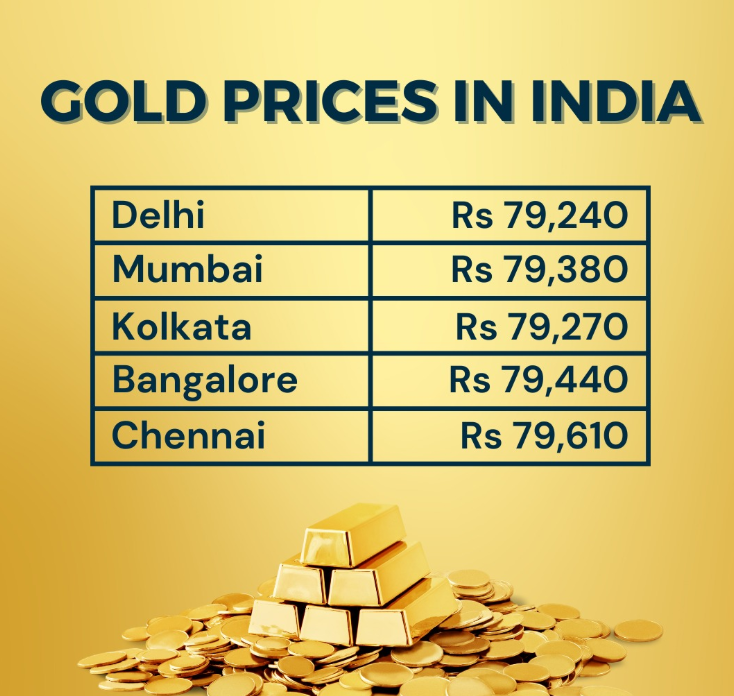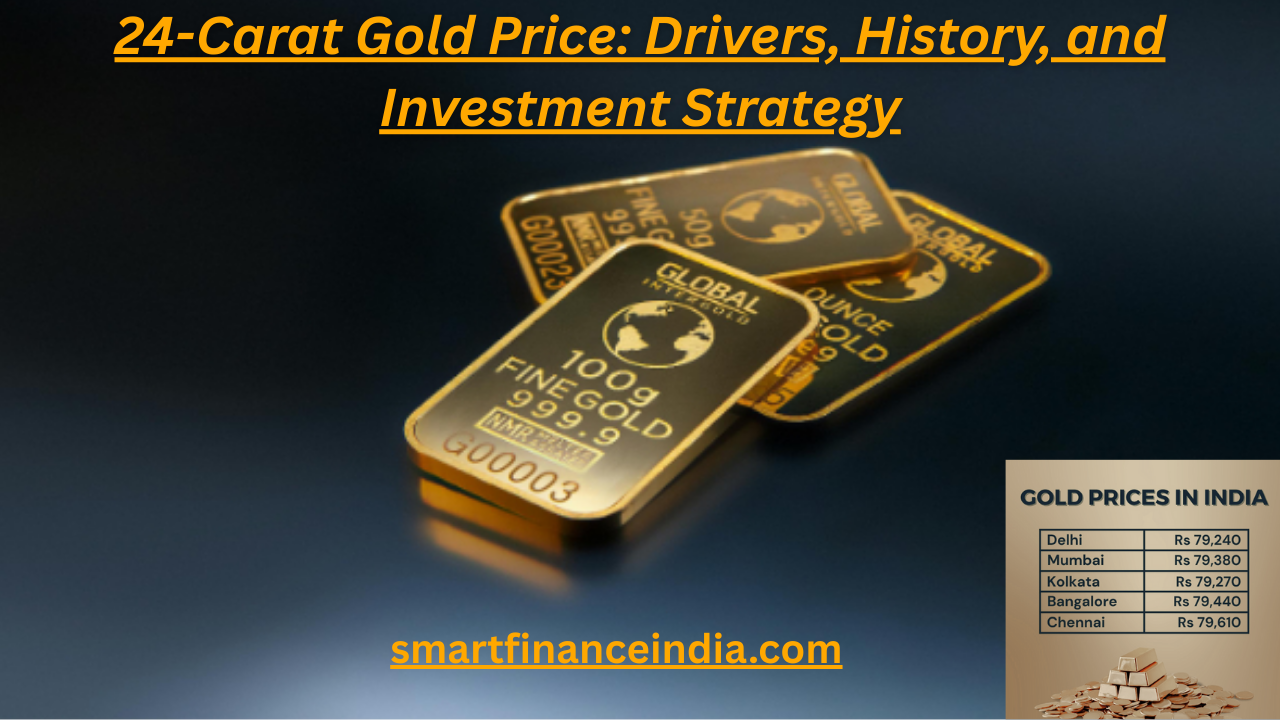Gold. The very word conjures images of shimmering treasure, ancient empires, and enduring value. In the vast and often complex universe of precious metals, 24-carat gold occupies a unique pedestal. It represents the pinnacle of purity, the unadulterated essence of the metal in its most natural and radiant form. However, the “24-carat gold rate” is far from a single, static number. It is a dynamic, pulsating figure, a nexus where geology, global economics, geopolitics, and human emotion converge. Understanding its price is not merely about checking a daily quote; it is about deciphering the language of the world’s markets. This article delves deep into the multifaceted world of the 24-carat gold rate, exploring its definition, the intricate machinery that drives its fluctuations, its historical context, and its role as an investment and cultural touchstone.Understanding the 24-Carat Gold Price: Drivers, History, and Investment Strategy
Part 1: Defining the Standard – What is 24-Carat Gold?
Before we can understand its price, we must first understand its nature. The term “carat” (kt or k) in the context of gold purity is distinct from the “carat” (ct) used for gemstones. Gold caratage is a measure of purity, indicating the proportion of pure gold in an alloy out of 24 parts.
- 24-Carat Gold: This is gold that is 99.9% pure, often stamped as 999 or 999.9. It means that out of 24 parts, all 24 are pure gold. There is no room for other metals. This supreme purity gives it a rich, deep yellow color that is unmistakable. It is the standard for gold bullion bars and coins traded by central banks and investors, such as the well-known 1-ounce Gold American Eagle or the 1-kilogram gold bars held in vaults.
- The Alloying Reality: Pure gold, in its 24-carat form, is a relatively soft and malleable metal. While this is ideal for certain industrial applications and investment bars, it is impractical for most jewelry. A ring or necklace made from 24-carat gold would be easily scratched, dented, and deformed with daily wear. This is why lower caratages exist:
- 18-Carat Gold: 18 parts gold, 6 parts other metals (75% purity).
- 14-Carat Gold: 14 parts gold, 10 parts other metals (58.3% purity).
- 10-Carat Gold: 10 parts gold, 14 parts other metals (41.7% purity).

The other metals added, such as copper, silver, zinc, or palladium, are called alloy metals. They increase the hardness and durability of the gold and can also alter its color, creating white, rose, or green gold. Therefore, when discussing the “24-carat gold rate,” we are referring to the benchmark price of the raw, pure metal itself, before any craftsmanship, design, or retail markup is applied.
Part 2: The Engine Room – What Truly Drives the Price of Gold?
The daily fluctuation of the gold price is a spectacle watched by millions. It is determined by a complex and interconnected set of factors that can be broadly categorized into economic forces, geopolitical events, and market dynamics.
A. Macroeconomic Factors: The Invisible Hand
- The US Dollar and Inverse Correlation: This is arguably the most significant driver. Gold is predominantly priced in U.S. dollars on the global market. When the dollar strengthens against other currencies, it takes fewer dollars to buy an ounce of gold, so the price tends to fall. Conversely, when the dollar weakens, it takes more dollars to buy that same ounce, pushing the price up. Investors often view gold as an alternative currency, a hedge against dollar depreciation.
- Inflation and Interest Rates: Gold has historically been a classic hedge against inflation. When the cost of living rises, the purchasing power of paper currency erodes. Since gold is a tangible asset with a finite supply, its value in currency terms often increases during periods of high inflation. Interest rates play a crucial linked role. When central banks (like the U.S. Federal Reserve) raise interest rates, savings accounts and government bonds become more attractive because they offer a yield, or “return.” Gold, which does not pay any interest or dividends, becomes less attractive because investors are forgoing this potential income (this is known as opportunity cost). This can lead to selling pressure on gold. Conversely, when interest rates are low or near zero, the opportunity cost of holding gold diminishes, making it more appealing.
- Central Bank Policies: Central banks are not just policymakers; they are also massive holders of gold. Their buying and selling activities can significantly impact the market. In recent years, many emerging market central banks (e.g., China, Russia, India, Turkey) have been net buyers of gold, diversifying their reserves away from the U.S. dollar and other currencies. This sustained institutional demand creates a solid floor for gold prices.

B. Geopolitical and Sentiment Drivers: The Fear Factor
- Geopolitical Uncertainty: Gold’s status as a “safe-haven” asset shines brightest during times of trouble. Wars, political instability, international tensions, and trade disputes create uncertainty in traditional financial markets like stocks and bonds. In such scenarios, investors flock to the perceived safety and stability of gold, driving up its price. It is an asset that is not tied to any specific government and cannot be printed into existence.
- Market Volatility and Recessionary Fears: Even in the absence of geopolitical conflict, fear of an economic recession or a sharp correction in the stock market can trigger a flight to safety. A rising gold price can be a barometer of market anxiety.
C. Market Dynamics: The Laws of Supply and Demand
- Supply-Side Constraints: Gold is a finite resource. Its supply comes primarily from mining production, which is a capital-intensive, time-consuming, and geographically concentrated process. Factors like declining ore grades, rising production costs, labor strikes, and environmental regulations can constrain supply. Another source of supply is the recycling of old gold jewelry and scrap. In times of high prices, this “above-ground” supply increases as people sell their old gold.
- Demand-Side Pressures: Demand is a multi-headed beast:
- Jewelry: This is the largest source of demand globally, particularly in cultural powerhouses like India and China, where gold is integral to festivals, weddings, and gifts. Seasonal demand, such as during the Indian wedding season and Diwali or the Chinese New Year, can cause predictable seasonal spikes in the gold rate.
- Technology and Industry: Gold’s excellent conductivity and resistance to corrosion make it vital for electronics, dentistry, and other industrial applications. While this demand is price-sensitive, it represents a steady underlying consumption.
- Investment Demand: This includes everything from individuals buying small coins and bars to massive inflows into gold-backed Exchange Traded Funds (ETFs). Investment demand is highly sensitive to the economic and geopolitical factors mentioned above.
Part 3: A Historical Perspective – Gold’s Journey Through Time
To appreciate the modern gold rate, one must glance backward. Gold’s role has evolved from a direct medium of exchange to a bedrock of the global financial system and, finally, to a freely traded commodity.
- The Gold Standard Era: For much of the 19th and early 20th centuries, major currencies were backed by gold under the “Gold Standard.” A country’s currency could be exchanged for a fixed amount of gold. This system provided stability but was eventually abandoned by most countries by the mid-20th century because it limited the ability to print money and respond to economic crises.
- The Bretton Woods System and Its Collapse: After World War II, the Bretton Woods agreement established a system where other currencies were pegged to the U.S. dollar, which was in turn convertible to gold at a fixed rate of $35 per ounce. This system collapsed in 1971 when President Nixon suspended the dollar’s convertibility into gold, effectively ending the last vestiges of the gold standard. This event, known as the “Nixon Shock,” unleashed gold into a world of free-floating prices.
- The Modern Price Journey: Since 1971, the gold price has experienced dramatic swings. It soared during the high-inflation 1970s, languished during the bull market of the 1980s and 90s, and then began a historic bull run in the early 2000s, driven by factors like the dot-com bust, 9/11, low interest rates, and the 2008 Global Financial Crisis. It peaked above $1,900 per ounce in 2011. After a correction, it entered a new bull market post-2020, fueled by unprecedented global monetary stimulus during the COVID-19 pandemic and subsequent inflation, breaching the $2,000 barrier and setting new all-time highs above $2,400 in 2024.
Part 4: The Mechanics of the Quote – How is the 24-Carat Gold Rate Set?
You might look up “today’s gold price” and see a single figure, but this belies a complex process. The benchmark for the 24-carat gold rate is the London Bullion Market.
- The London Bullion Market Association (LBMA): The LBMA does not set the price but oversees the market. The most important price is the LBMA Gold Price, which is set twice daily (once in the morning and once in the afternoon, London time) through an electronic auction process involving major international banks. This benchmark price is used globally for settling contracts between miners, refiners, central banks, and ETFs.
- Spot Price vs. Retail Price: The “spot price” is the current market price for immediate delivery of gold. However, when you, as an individual, go to buy a 24-carat gold coin or bar, you will pay a premium over the spot price. This premium covers the manufacturer’s costs, the dealer’s margin, and any distribution fees. Similarly, if you sell, you will likely receive a price slightly below the spot price. The difference is the “bid-ask spread.”
- Futures Markets: Major commodities exchanges, like the COMEX (Commodity Exchange Inc.) in New York, trade gold futures contracts. These are agreements to buy or sell gold at a predetermined price on a future date. The activity in the futures market, driven by speculators and hedgers, heavily influences the spot price.
Part 5: 24-Carat Gold as an Investment – Weighing the Glitter
Investing in 24-carat gold is a strategic decision with distinct advantages and disadvantages.
Advantages:
- Portfolio Diversification: Gold often has a low or negative correlation with stocks and bonds. When these assets fall, gold may hold its value or rise, helping to reduce overall portfolio volatility.
- Store of Value: Over the very long term, gold has preserved purchasing power, acting as a hedge against the devaluation of paper currency.
- Liquidity: Gold is a highly liquid asset. It can be sold for cash anywhere in the world, 24 hours a day.
- Safe-Haven Asset: As discussed, it provides protection during crises.
Disadvantages:
- No Yield: Gold does not generate income like dividends from stocks or interest from bonds. Its return is solely based on capital appreciation.
- Storage and Insurance Costs: Holding physical gold securely requires a safe or a safety deposit box, and it should be insured, both of which incur ongoing costs.
- Price Volatility: While a safe haven in the long run, gold can be highly volatile in the short term.
- Purity and Authenticity Risks: When buying physical gold, there is a risk of counterfeits. It is crucial to buy from reputable, LBMA-approved dealers.
Methods of Investment:
- Physical Gold: Bullion bars and coins.
- Gold ETFs: Funds that hold physical gold, trading like a stock on an exchange. A popular example is the SPDR Gold Shares (GLD).
- Gold Mining Stocks: Shares of companies that mine gold. These are leveraged to the gold price but also carry company-specific risks.
- Gold Futures and Options: Complex derivatives suitable for sophisticated investors.
Part 6: The Cultural Dimension – Beyond the Price Tag
In many parts of the world, particularly in India, the Middle East, and East Asia, the 24-carat gold rate is not just a financial metric; it is a cultural heartbeat. It is checked with the same daily rhythm as the weather. It dictates the timing of major purchases for weddings and festivals. It is intertwined with concepts of blessing, prosperity, and family security. For millions, gold is not an investment in the Western sense but a form of saving, a tangible family treasury passed down through generations. This deep-seated cultural demand adds a powerful, non-speculative layer of support to the global gold market that is often underestimated by purely economic models.
Conclusion: The Eternal Equilibrium
The 24-carat gold rate is more than a number on a screen. It is a dynamic equilibrium, a constantly shifting balance between fear and greed, inflation and interest, supply and demand. It is a reflection of our collective confidence in the future and in the systems we have built. To understand its movement is to understand the pulse of the global economy and the timeless human quest for security and value. While its price will continue to fluctuate, its fundamental role as the ultimate symbol of purity and a bastion of wealth seems, for now, as enduring as the metal itself.
